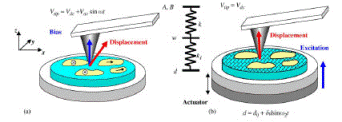Department of Physics and Astronomy: Publications and Other Research

Alexei Gruverman Publications
Document Type
Article
Date of this Version
2008
Abstract
We show that after long times (24 h), individual circular domains in 50 nm thick [0 0 1] epitaxial films of ferroelectric lead zirconate titanate (PZT) develop facets due to the crystalline anisotropy, e.g. along [1 0 0] directions. This appears to be a creep process (Tybell et al. 2002 Phys. Rev. Lett. 89 097601; Paruch et al. 2006 J. Appl. Phys. 100 051608) and was first seen in a nanoarray of 180° domains (Ganpule et al. 2002 Phys. Rev. B 65 014101). The effect is independent of polarity and thus rules out any electronic dependence on different work functions for top and bottom electrodes. The phenomenon is interpreted instead as a mechanical relaxation due to highly inhomogeneous stress distributions on the nanodisks, assumed to have stress-free edges.


Comments
Published in Journal of Physics: Condensed Matter 20 (2008), 425222 (5 pp); doi 10.1088/0953-8984/20/42/425222 Copyright © 2008 IOP Publishing Ltd. Used by permission. http://stacks.iop.org/JPhysCM/20/425222